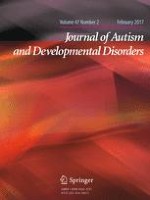23-11-2016 | Brief Report
Brief Report: Diminished Gaze Preference for Dynamic Social Interaction Scenes in Youth with Autism Spectrum Disorders
Gepubliceerd in: Journal of Autism and Developmental Disorders | Uitgave 2/2017
Log in om toegang te krijgenAbstract
In this study, we present an eye-tracking paradigm, adapted from previous work with toddlers, for assessing social-interaction looking preferences in youth ages 5–17 with ASD and typically-developing controls (TDC). Videos of children playing together (Social Scenes, SS) were presented side-by-side with animated geometric shapes (GS). Participants with ASD demonstrated reduced SS preferences compared to TDC, results also represented continuously by associations between higher SS preferences and fewer social difficulties across the combined sample. Exploratory analyses identified associations between increased SS preferences and higher Vineland Daily Living Skills in ASD and suggested SS preferences in TDC females might drive ASD versus TDC between-group differences. These findings describe potentially sex-linked couplings between preferences for social information and social functioning in school-aged children.
